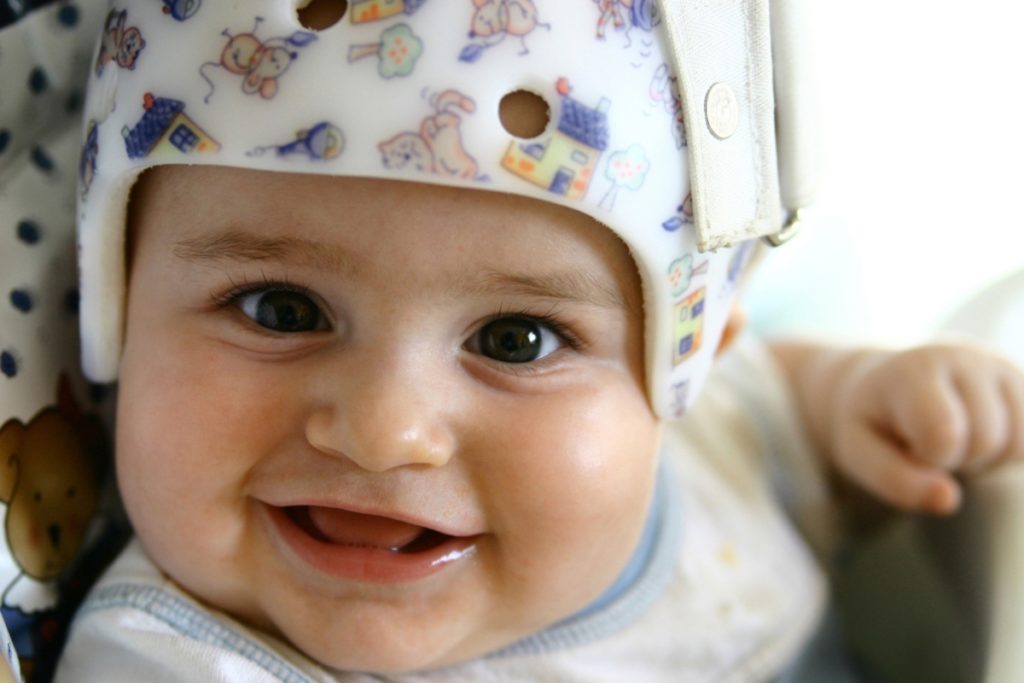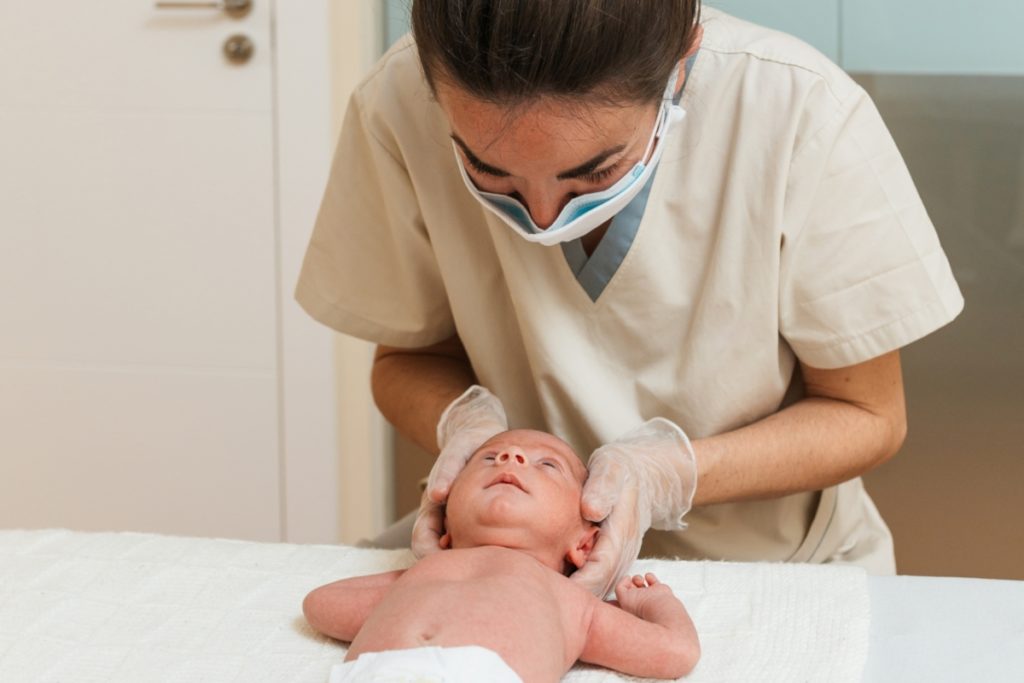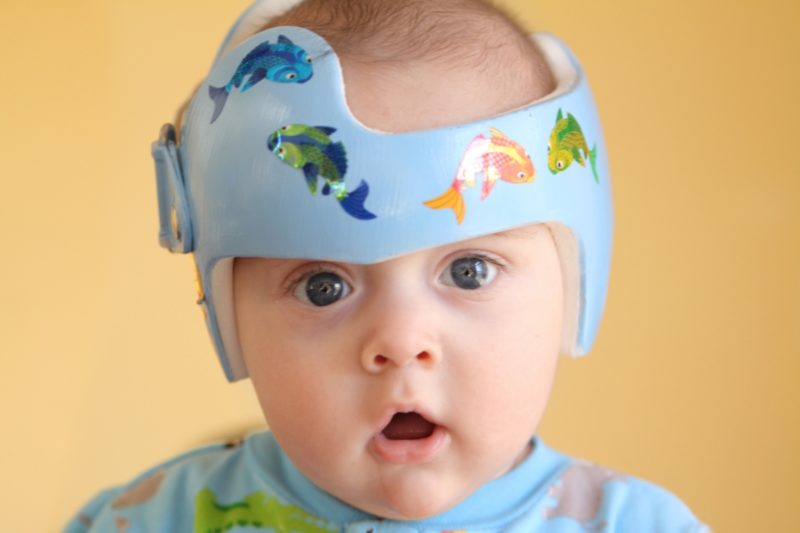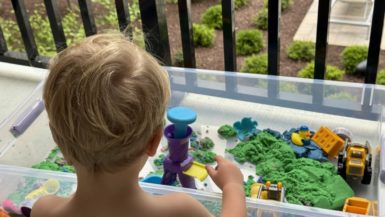Cranial helmets are a common therapy for babies in the US, but people from other parts of the world are still surprised that so many babies wear them around here. Having had experience with neonatal and pediatric care in different parts of the world (my first son was born in Europe, second son was born in Mexico, but we also moved back to the US during their babyhoods) I was fascinated by baby helmets and debating what’s best for my own child based on quite a number of different medical opinions.
What are baby helmets used for?
Cranial Remolding Orthosis (CRO) also known as baby helmets help correct a baby’s skull shape by redirecting a child’s head growth. They’re a treatment that’s prescribed to help mold the baby’s skull into shape.
The helmets are custom-fitted by a cranial specialist for each baby to allow for growth.
Baby helmets are meant to treat plagiocephaly (most parents know it by flat head syndrome) and craniosynostosis. The latter is caused when bony plates in the skull are abnormally fused together and require surgery followed by helmet therapy – it’s also an instance when the helmet is usually required.
Plagiocephaly affects around half of all babies under the age of one to some extent, but 2 most of it is corrected.
Why are baby helmets more common now? Since the American Academy of Pediatrics Task Force on Infant Positioning and Sudden Infant Death Syndrome (SIDS) in 1992 recommended that healthy infants be positioned supine for sleeping, the incidence of SIDS has decreased from 1.2 per 1000 live births in 1992 to 0.56 per 1000 live births in 2001.
Coincident with this decrease in SIDS has been a drastic increase in positional skull deformity, estimated at approximately 13% in healthy singleton infants, which makes this a relatively common issue to be faced by pediatricians caring for infants and their families. Babies spend so much time with something on the back of their heads thanks to cribs, swings, car seats that it obviously causes more flat spots.
How long do babies have to wear helmet?
Babies 1 to 4 months old are too young for helmets. If a baby 4 to 6 months of age still has flatness after conservative measures have been attempted, helmet therapy may be considered.
Helmets will not help after brain growth is done, and three-fourths of brain growth happens by age 2. They’re best for infants under the age of 14 months while the skull is still flexible, but ideally before the baby turns 6 months.
Babies usually wear their helmets for 23 hours each day and only take it off for bath, when it’s time to clean the helmet as well.
In terms of how many months will your baby need to wear a helmet, there’s no one fits all scenario because every baby is different. The average treatment with a helmet is usually three months.
How much does a baby helmet cost?
The cost is outrageous. A baby helmet costs between $1500 and $4000 and depending on your insurance it might not be fully covered. In fact, it’s rarely covered.
Add the cost of physical therapy and other medical appointments and it’s clear that not everyone can afford them. Personally, I do feel like a baby helmet is a “luxury item” due to the hefty price tag.

Pros and Cons of Baby Helmet
Baby helmets are extremely popular in the US, while you can rarely see a baby wearing one elsewhere. When it comes to craniosynostosis a helmet is needed, but why is plagiocephaly treatment recommended as a standard intervention for babies with plagiocephaly in the USA while babies elsewhere are expected to self-correct? That’s a great question, but it has to do with the medical approach (speaking from my own experience in nursing).
In the US, the treatments are often focused on preventive medicine, vs in Europe or LATAM countries it’s reactive medicine oriented towards curating an actual problem. Doctors in the US often prescribe baby helmets to “play it safe”, even if the baby doesn’t necessarily need it as they want to avoid future potential issues.
Helmets are often prescribed to twins as a precaution, even if they don’t have plagiocephaly.
Research has offered mixed conclusions on the efficacy of helmets for skull deformities, so even in the US alone, many doctors will have different opinions. In fact, based on a study done improvement in skull shape was almost the same in the helmet therapy and control groups… but all parents from the helmet group reported at least one side effect – whether emotional anxiety, ear deviation, or skin irritation.
In 77% of cases, milder plagiocephaly can be corrected sufficiently without the need for a helmet, through what is known as repositioning.
Unless your baby’s case is severe helmet shouldn’t be the first suggestion as you can try conservative measures, such as supervised tummy time while the child is awake and changing sides when the baby sleeps. Especially considering the cost.

Is helmet therapy the only treatment for a child with a positional skull deformity?
It depends. If the condition is not severe, changing your baby’s usual position or starting physical therapy may help.
A positional skull deformity does not affect a child’s brain development or cause any other medical condition. To check whether the brain is affected requires an X-ray scan. We did it with my son and the doctor informed us that he’s fine and we can work on correcting it without a helmet.
Most babies with plagiocephaly will be sent to physical therapy. Physical therapy and stretching and strengthening exercises are especially helpful for babies with torticollis, which is present in about 20% of babies with positional flattening.
Torticollis occurs when the baby’s neck muscles are tighter and more contracted on one side and the baby turns to one side only.
My son had torticollis and plagiocephaly and after a scan and consultation with 5 doctors in 4 different countries (USA, Italy, Mexico, Poland) all but one doctor (guess which one obviously) agreed based on a scan we can avoid the helmet if we keep working on him. We kept turning him, doing tummy time and physical therapy and I can say that my son doesn’t have any skull deformities anymore.
Is helmet therapy required?
Helmet therapy for plagiocephaly is always a choice, it’s never mandatory. It can be helpful in the right situation, but it’s not always needed. The head shape does often get better, with or without the use of a helmet so if you cannot afford a helmet don’t feel like you’re a bad parent – you’re not!






Leave a reply